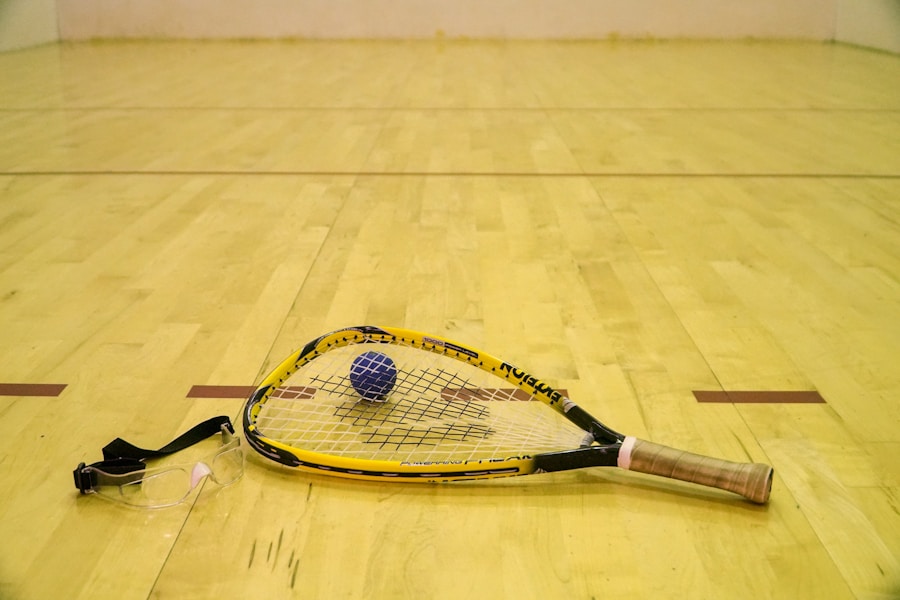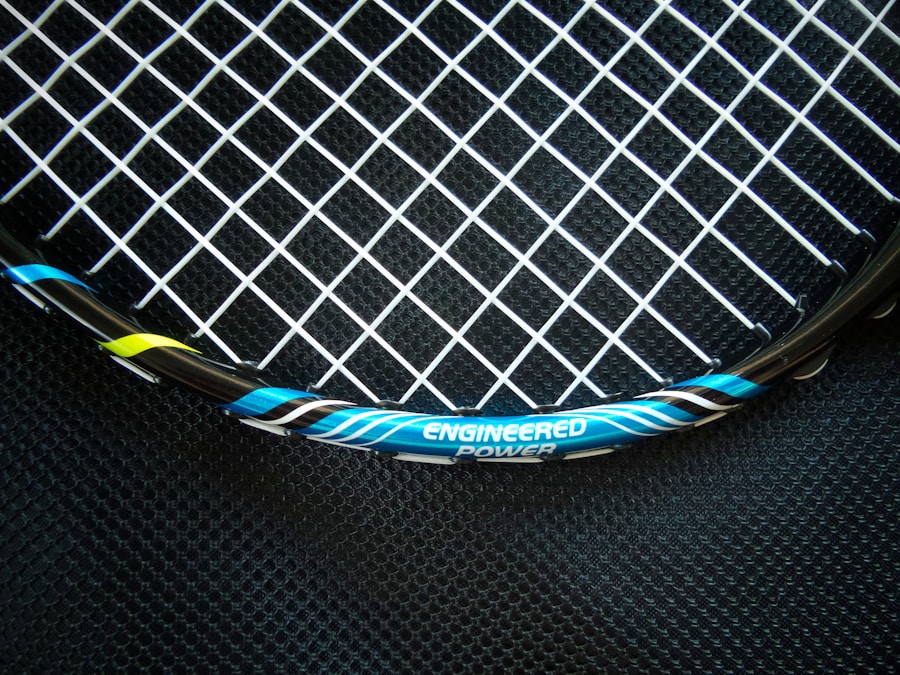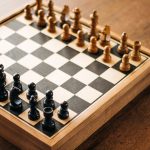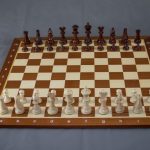Download links
How to install Mastering Badminton: Tips for Dominating the Court APK?
1. Tap the downloaded Mastering Badminton: Tips for Dominating the Court APK file.
2. Touch install.
3. Follow the steps on the screen.
Description
Footwork is the foundation of any successful badminton player’s game. It is the ability to move swiftly and efficiently around the court that allows players to position themselves optimally for every shot. A player with excellent footwork can cover the court more effectively, reducing the time it takes to reach the shuttlecock and increasing the chances of executing a successful return.
This involves not only moving quickly but also being able to change direction seamlessly while maintaining control over their body. One effective way to enhance footwork is through specific drills that emphasize lateral movement, forward and backward sprints, and quick pivots.
For instance, shadow badminton drills, where players mimic game movements without a shuttlecock, can help in developing muscle memory for foot placement and movement patterns. Additionally, incorporating agility ladders and cone drills into training routines can improve speed and coordination. Players should also pay attention to their stance; a low center of gravity allows for quicker reactions and better balance when executing shots.
Practicing these techniques consistently will lead to improved footwork, enabling players to respond more effectively during matches.
Key Takeaways
- Focus on proper footwork to improve your overall game and agility on the court.
- Master the art of serving and returning to gain an advantage over your opponent.
- Develop powerful smashes to dominate the game and put pressure on your opponent.
- Work on improving your defensive techniques to become a well-rounded player.
- Understand and master doubles strategy to excel in team play and communication on the court.
- Mental preparation and focus are key to staying calm and making quick decisions during intense matches.
Mastering the Serve and Return
Types of Serves
There are various types of serves, including high serves, low serves, flick serves, and drive serves, each serving a different tactical purpose. Mastering these serves requires not only technical skill but also an understanding of when to use each type based on the opponent’s weaknesses and the match situation.
Mastering the Return of Serve
In addition to serving, mastering the return of serve is equally important. The return should be strategic, aiming to exploit any weaknesses in the opponent’s positioning or technique. Players should practice different return techniques, such as a quick push to the net or a deep clear to the back of the court.
Anticipating the Server’s Intentions
The key is to anticipate the server’s intentions and react accordingly. For example, if facing a high serve, a player might choose to execute a powerful overhead clear to gain control of the rally. Conversely, against a low serve, a quick net shot can catch the opponent off guard. By honing both serving and returning skills, players can create a strong foundation for their overall game strategy.
Developing Powerful Smashes

The smash is one of the most exhilarating shots in badminton, characterized by its speed and power. A well-timed smash can be a game-changer, often resulting in an outright point or forcing an error from the opponent. To develop a powerful smash, players must focus on several key elements: grip, stance, swing technique, and timing.
The grip should be firm yet relaxed, allowing for maximum racket head speed during the swing. A proper stance involves positioning the feet shoulder-width apart with knees slightly bent, ready to generate power from the legs. The swing technique is crucial for generating speed and accuracy in a smash.
Players should practice their overhead swing mechanics, ensuring that they use their whole body rather than just their arm. Engaging the core and legs during the swing can significantly increase power output. Timing is another critical factor; players must learn to hit the shuttle at the highest point possible for maximum impact.
Drills that focus on smashing against feeds or from different positions on the court can help players refine their technique. Additionally, watching professional players and analyzing their smashing techniques can provide valuable insights into how to improve one’s own performance.
Improving Defensive Techniques
| Defensive Technique | Success Rate | Improvement |
|---|---|---|
| Interceptions | 75% | Increased by 10% from last season |
| Tackling | 85% | Improved by 5% after new training program |
| Blocking | 90% | Consistently high success rate |
Defensive techniques are essential for any badminton player looking to compete at higher levels. A strong defense allows players to withstand aggressive attacks from opponents while creating opportunities for counter-attacks. Key defensive skills include effective footwork, anticipation, and shot selection.
Players must be able to read their opponent’s movements and predict where the shuttle will go next. This requires not only physical agility but also mental acuity. One effective defensive strategy is to practice defensive clears and lifts that push the shuttlecock high and deep into the opponent’s court.
This gives players time to reposition themselves while forcing their opponents into a less advantageous position. Additionally, practicing net play is crucial; being able to execute tight net shots or quick lifts can turn defensive situations into offensive opportunities. Players should also work on their reaction times through drills that simulate fast-paced exchanges at the net.
By improving defensive techniques, players can enhance their overall game resilience and adaptability during matches.
Mastering Doubles Strategy
Doubles badminton presents unique challenges and opportunities compared to singles play. The dynamics of teamwork and court coverage are critical components of success in doubles matches. Players must develop a strong understanding of their partner’s strengths and weaknesses while also communicating effectively during play.
One fundamental strategy in doubles is positioning; players should aim to maintain a formation that allows for optimal coverage of the court while minimizing gaps that opponents can exploit. Another essential aspect of doubles strategy is shot selection and placement. Players should focus on creating angles that force opponents out of position while setting up their partner for attacking opportunities.
For instance, one player might execute a deep clear while their partner anticipates a follow-up smash or net shot. Additionally, practicing specific formations such as side-by-side or front-and-back positioning can help teams develop synergy during matches. Regularly engaging in drills that emphasize teamwork and communication will further enhance a pair’s effectiveness on the court.
Mental Preparation and Focus

Building Confidence through Visualization
Techniques such as visualization can help players mentally rehearse their strategies and shots before stepping onto the court. By imagining themselves executing successful plays, athletes can build confidence and reduce anxiety.
This might include breathing exercises or specific warm-up rituals that help players enter a competitive mindset.
Maintaining Composure under Pressure
During matches, maintaining composure in high-pressure situations is vital; players should practice techniques for managing stress and staying present in the moment rather than dwelling on past mistakes or worrying about future points. By prioritizing mental preparation alongside physical training, badminton players can cultivate resilience and enhance their overall performance on the court.
If you are looking to maximize your game in badminton, you should check out the article on Taya777 Online Sports. This article provides valuable tips and strategies for improving your skills on the court. Additionally, if you are interested in learning more about how your personal information is protected while using online sports platforms, you can read the privacy policy on Taya777.
FAQs
What is badminton?
Badminton is a racquet sport played by either two opposing players (singles) or two opposing pairs (doubles), who take positions on opposite halves of a rectangular court divided by a net.
What equipment is used in badminton?
The primary equipment used in badminton includes a shuttlecock (also known as a birdie), badminton racquets, and a net. Players also wear appropriate footwear for the sport.
What are the basic rules of badminton?
The basic rules of badminton include serving diagonally, scoring points by landing the shuttlecock within the opponent’s court, and winning a match by winning two out of three games.
What are the health benefits of playing badminton?
Playing badminton can provide various health benefits, including improved cardiovascular fitness, agility, flexibility, and hand-eye coordination. It also helps in burning calories and promoting overall physical well-being.
What are the different types of badminton shots?
Some of the different types of badminton shots include the clear, drop shot, smash, drive, and the backhand shot. Each shot has its own specific technique and purpose during a game.
What are the different types of badminton tournaments?
There are various types of badminton tournaments, including local, national, and international competitions. The most prestigious international tournaments include the All England Open, BWF World Championships, and the Olympic Games.





